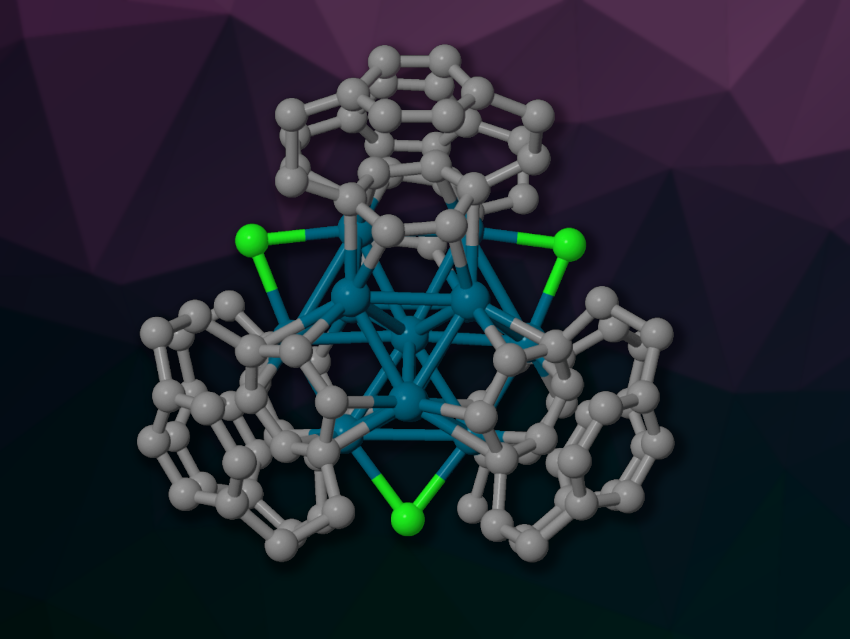Metal nanoclusters with precisely controlled sizes and shapes are interesting research targets e.g., in inorganic chemistry or catalysis. Clusters with 13 metal atoms, for example, can form a face-centered-cubic (fcc) close-packed structure, a hexagonal close-packed (hcp) structure, or an icosahedron. Studying the structure of the metal core in such clusters can be made more difficult by a large number of capping ligands. Using cyclic unsaturated hydrocarbons as face-capping ligands reduces this number, while still stabilizing the cluster.
Shigeyoshi Sakaki, Kyoto University, Japan, Tetsuro Murahashi, Tokyo Institute of Technology, Japan, and colleagues have prepared two polyarene palladium nanoclusters using [2.2]paracyclophane (PCP) as a face-capping arene ligand. The team started from the bis-μ3-arene trinuclear Pd sandwich complex [Pd3(μ3-PCP)2(CH3CN)3][B(ArF)4]2 (ArF = 3,5-(F3C)2C6H3), which was kept in a 1,2-dichloroethane solution at 70 °C and generated two products: one Pd13 cluster (simplified structure pictured) and one Pd17 cluster.
The Pd13 cluster [Pd13(μ4-PCP)6(μ-Cl)3][B(ArF)4]2 was obtained in a yield of 15 % and the Pd17 cluster [Pd17(μ3-PCP)8(μ4-Cl)2][B(ArF)4]3 in a yield of 8 % via crystallization. Both products were characterized using single-crystal X-ray diffraction. The Pd17 cluster has a non-close-packed core surrounded by eight PCP ligands in a square antiprismatic structure. In this cluster, the PCP ligands each cap a face of the cluster that has three Pd atoms, while two of the square faces are capped by Cl ligands that might stem from the solvent.
The Pd13 cluster has a hexagonal close-packed core with one central Pd atom surrounded by a anticuboctahedral Pd12 structure. The PCP ligands each cap a face of the cluster with 4 Pd atoms. According to the researchers, this μ4-bridging coordination mode is unprecedented for six-membered arene rings. The free equatorial spaces are occupied by three bridging Cl ligands. The team compared the results with a previously synthesized face-centered-cubic Pd13 cluster that has seven-membered cycloheptatrienyl ligands and found that the ring-size of the face-capping cligands has an important impact on the structure of the resulting metal nanocluster.
- Isolation and Structures of Polyarene Palladium Nanoclusters,
Ayaka Hatano, Tsuyoshi Sugawa, Rei Mimura, Shunichi Kataoka, Koji Yamamoto, Tsubasa Omoda, Bo Zhu, Yu Tian, Shigeyoshi Sakaki, Tetsuro Murahashi,
J. Am. Chem. Soc. 2023.
https://doi.org/10.1021/jacs.3c02849




